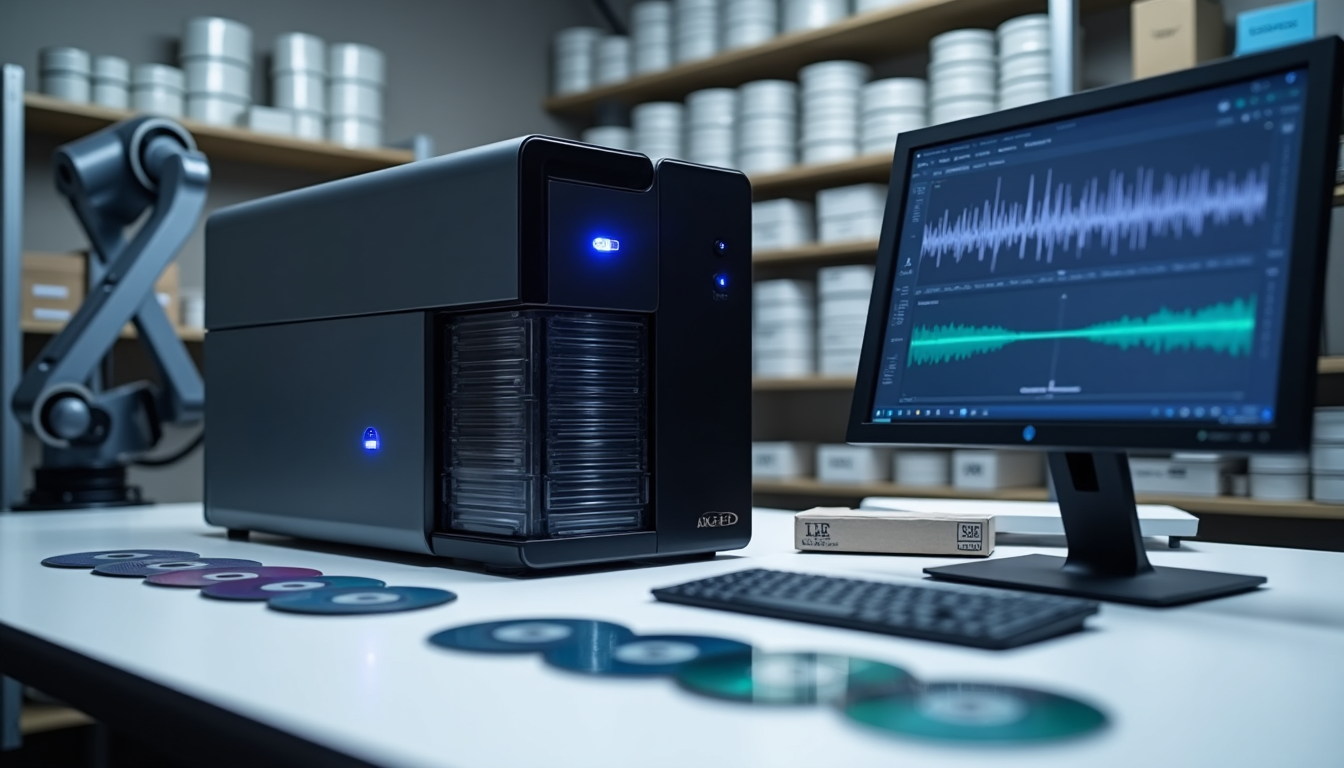CD Duplication Technology in 2025: What Most Businesses Get Wrong

The CD duplication technology market remains strong and is expected to reach USD 2.90 Billion by 2034, even as digital transformation reshapes the scene. But many businesses find it challenging to handle this vital service properly.
The market caters to a variety of sectors like music, film, software, and data storage. Companies often make mistakes that get pricey during their duplication processes. These mistakes range from choosing between duplication and replication to finding the right service provider that handles packaging and printing needs.
Let’s take a closer look at the common pitfalls in CD duplication. You’ll learn the key differences between duplication and replication, and discover how modern duplication services can boost your business operations.
Common CD Duplication Mistakes in 2025
Businesses often rush CD duplication without proper quality checks. This hasty approach leads to mistakes. Many duplicated CDs don’t play well on older or sensitive CD players, so picking the right media is vital to project success.
Testing and verification play a key role in the process. Professional duplicators say rushed orders create more errors, especially when clients skip quality checks. The best projects need at least two weeks to complete the duplication process, which includes material approval and sample testing.
CD duplication’s biggest problem remains quality control. These factors affect CD quality:
- Media selection and compatibility issues
- Improper artwork trimming and packaging
- Inadequate error checking and verification
- Poor communication with service providers
- Rushed deadlines affecting final output
Packaging decisions create challenges for many companies. Businesses that choose cheap jewel cases see more breakage during shipping, and this leads to unhappy customers and returns. The choice between polystyrene and polypropylene cases affects both durability and environmental impact.
Artwork preparation often trips up the process. Professional duplicators suggest keeping a .125-inch safety margin between crop lines and essential design elements. On top of that, companies often miss file format requirements, which causes delays when artwork needs fixes or reformatting.
CD Duplication vs Replication: Making the Right Choice
Knowing the key differences between CD duplication and replication helps businesses make better choices. The duplication process burns data onto blank recordable disks (CD-Rs). Replication creates disks from scratch through injection molding.
The quantity requirements determine which method works best. Duplication is more economical for orders under 500 units. Replication becomes the better choice for larger quantities, and the costs drop to USD 0.35 to USD 0.79 per disk when orders exceed 1,000 units.
Here’s a practical comparison of both methods:
| Aspect | Duplication | Replication |
|---|---|---|
| Setup Time | Minimal | 5-12 days |
| Min. Order | 25-300 disks | 300-500 disks |
| Cost (Small Orders) | USD 0.50-2.50 per disk | Higher initial investment |
| Best For | Quick turnaround, small batches | Mass production, retail quality |
Quality plays a crucial role in the decision-making process. Replicated disks last longer and have a professional finish. Small quantity orders with quick turnaround needs work better with duplication. Mass production requirements are a better match for replication.
Manufacturing time varies between these methods significantly. Duplication takes 7-9 working days, which makes it perfect for urgent projects. Replication needs 12-16 working days but delivers consistent quality in large batches.
Modern CD Duplication Service Features
CD duplication services now use advanced automation systems to streamline production. Modern facilities use robotic assembly lines that handle different case types and insert combinations for CD packaging.
The latest duplication systems excel at precision and speed. These systems print full-color, high-resolution images directly onto disks at a cost of pennies per disk. The technology automatically checks against source data to make sure disks play correctly on all devices.
Environmental innovations have changed CD packaging completely. Services now provide plastic-free options like Digipaks and cardboard jackets made from 100% recycled materials. The clear Digipak trays use recycled plastic, which shows the industry’s steadfast dedication to sustainability.
Automated systems have taken quality control to new levels. The machines use precise feeding mechanisms and advanced film scrap collection to create dustproof finishes. Modern facilities also use water-based biodegradable varnishes and vegetable-based inks for printing, which marks a radical alteration toward environmental responsibility.
Industry 4.0 technologies have boosted production efficiency. Smart servo systems are part of advanced packaging solutions, and automated quality testing makes sure each disk meets strict industry standards before shipping. These technological improvements lead to faster delivery times while maintaining product quality.
Conclusion
CD duplication technology is a vital service in 2025, yet many businesses struggle with its complexities. The difference between duplication and replication matters a lot. Duplication works best for small runs under 500 units, while replication offers affordable options for larger quantities.
Quality control is the life-blood of successful CD duplication projects. Companies get substantially better results when they spend enough time testing, pick the right packaging materials, and follow proper artwork specifications. The industry’s efficiency has improved thanks to modern automated systems. These systems now utilize eco-friendly materials like recycled components and water-based inks.
Successful CD duplication needs careful planning instead of rushed decisions. Each step requires proper attention – from picking duplication methods to selecting packaging options and setting up quality checks. Companies can utilize CD duplication technology effectively by researching well and partnering with reliable service providers. This approach helps them avoid common industry pitfalls.
